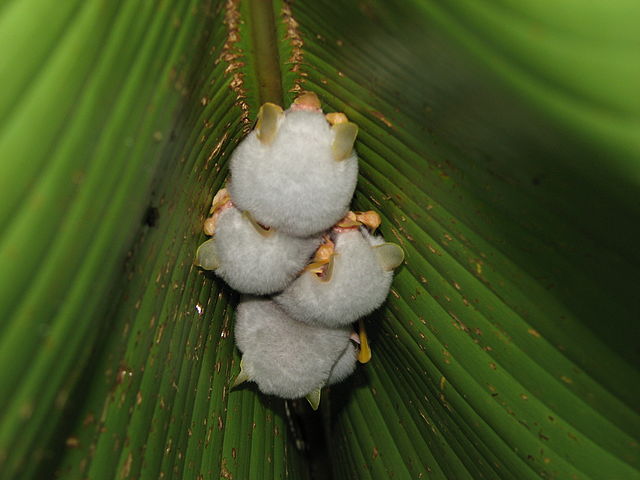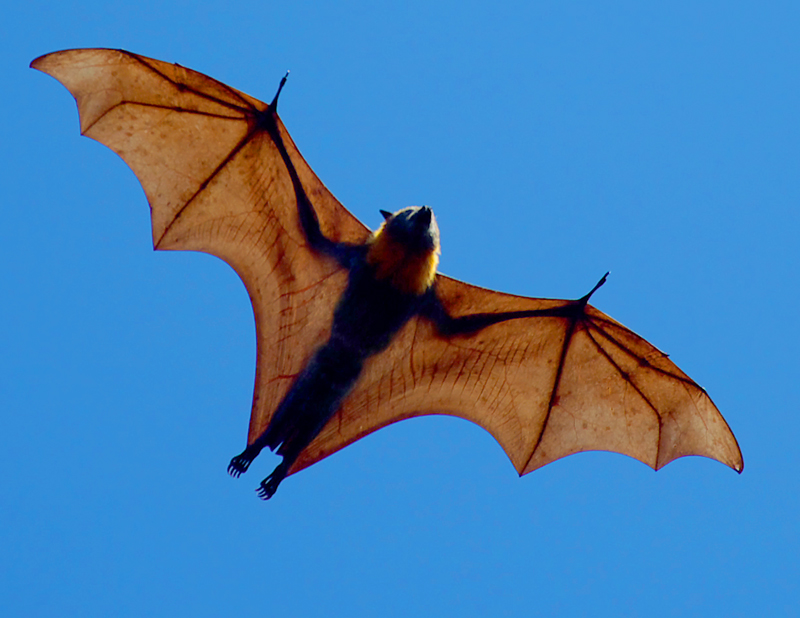Bats often get a bad rap but these clever creatures deserve more attention.
The fact that they are the only mammals capable of true flight (the flying squirrel glides from tree to tree, it doesn’t actually fly) – and up to distances of 250 miles per night in the case of the Mexican free-tailed bats – should give them enough kudos.
But the winged mammals have many other tricks to keep them ahead of the game in the animal kingdom.
From the smallest bat that’s the size of a bumblebee (Kitti’s hog-nosed bat is also the smallest mammal in the world) to the world’s largest bat – the rare fruit bat called the giant golden-crowned flying fox has a wingspan that reaches up to 6 feet – these incredible animals have intriguing habits and features.
Here are 8 bizarre bat facts that are sure to change their bad rap to an impressive appreciation.
1. They Love Camping
Don’t worry, you won’t hear scuffling noises outside your tent flap or see the silhouettes of little winged creatures trying to undo the zip to get in. While many bats prefer caves to hang out in, others – such as those living in tropical jungles, for example – don’t have that option so construct tents for shelter and protection.
The Honduran white bat makes its own tent from a tropical leaf by nibbling through the leaf’s veins so that it naturally folds downwards forming a shelter from sunlight or rainfall. They can also easily see any predators who may try to approach them from underneath.

Watch these cute tent-making bats in this video. You may be surprised at their appearance, which is different to the traditional bat image. They have white fur that takes on a greenish tint as the sunlight filters through the leaves, giving the little bats much-needed camouflage from hungry predators.
2. They Are Taking Over the Animal Kingdom
Well not quite, but approximately 1,240 species of bats have been identified so far. This number is equivalent to about 20% of the world’s classified mammal species.
Rodents are the only mammals to have a higher number of species than bats, making bats the second largest order of mammals.
There are two suborders of bats. Megabats are mostly fruit-eating and are less specialized than the other suborder, microbats. Microbats use echolocation and are highly specialized.
3. They Have Record-Breaking Tongues
The tube-lipped nectar bat has an astonishingly long tongue. In relativity to its body size, its tongue is the longest of any mammal.
This allows it to reach right down into the long cups of flowers when it’s feeding.
Its tongue is so long that, when it’s finished feeding, the retracted tongue actually coils up to fit inside its ribcage.
4. They Are Greedy
Brown bats love insects and just one of them can happily chomp through about 1,200 mosquito-sized insects per hour.
The common pipistrelle bat is the smallest bat in Europe and weighs just 5 grams (the same as a 20p piece) yet this hungry mammal has an incredible appetite and can devour 3,000 insects in one night.
As bats have such a fast metabolism – they can digest fruit, such as mangoes and bananas – in just 20 minutes, they can afford to be so greedy.
In Texas, about 20 million Mexican free-tailed bats live in Bracken Cave. Every night, they dine out on about 200 tons of insects.
Watch this video to see the ‘cloud’ of bats leave the cave as the world’s largest colony begins its nightly forage.
5. They Block Sonars
Bats use echolocation, their cool sonar-like skill, to navigate their way around and catch prey. The signal bounces off of objects so they become aware of any obstacles up ahead or any juicy insects that can be caught for dinner.
The greater bulldog bat even uses the sonar to catch fish. As the fish moves underwater it creates ripples on the surface. The bat detects these ripples and swoops down, catching the fish in its feet as it skims the surface.
Their echolocation is so highly tuned that they can detect the slightest of objects. This includes the thin strands that make up human hair, dispelling the myth that they’ll get caught up in it if they fly straight at you.
So how does such a large colony of bats use echolocation when trying to search for food when surrounded by so many other bats? Well the Mexican free-tailed bats we mentioned above actually jam the other bats’ signals so they don’t have to compete so hard to catch prey.
And some of their prey has caught on to this trick too. Moths interfere with bats’ sonars by creating a sound that confuses them, sending them to the wrong location and leaving them hungry.
6. They Enjoy a Sip of Tequila, Hic
Remember the tube-lipped nectar bat we mentioned earlier with its incredibly long tongue? It not only uses it to feed but to pollinate the flowers.
Long-nosed bats feed on the nectar of agave plants, which tequila is made from, and pollinate them in the process. They’re actually one of just a few creatures who do (presumably because the flowers smell of rotting fruit, which isn’t very appetizing for others), so tequila drinkers should wholeheartedly thank these hungry bats for helping to make their favourite tipple.
Watch this short video of ‘tequila bats’ and their conservation champion, Dr Rodrigo Medellin, also known as the ‘Bat Man’ of Mexico.
7. They Live in a Topsy-Turvy World
You’ve already heard of bats sleeping upside down but they also mate and give birth upside down. They also just like to hang around and take a rest.
Megabats that are roosting love the way things look from this angle so much that they bend their necks specifically so they can see things upside down.
Even when a bat dies, if it’s roosting, it’ll stay hanging upside down until something causes it to shake loose.
8. Their Droppings Are Explosive
Yes, you did read that correctly. Okay, so they don’t fly around excreting on objects and causing little explosions here and there. Their droppings, called guano, were discovered to have explosive properties and subsequently used in warfare. This is due to the high level of saltpeter (potassium nitrate) in the droppings.
Gunpowder was made from bat droppings and used by the United States in the War of 1812.
During the American Civil War, munitions were so low in the South that most of the bat caves were mined for guano.
Soldiers also made explosives from dried bat droppings during World War I.
Guano was already big business as the bat droppings had been found to contain a huge amount of nitrogen and phosphorous, making them an incredibly rich fertilizer. But when the explosive properties were discovered, sales of bat guano exploded (we couldn’t resist) and it actually became the largest mineral export in Texas before oil production began.

Can you think of any bizarre bat facts? Let us know in the comments section below.
Photo credit: Grey headed flying fox (main image) by Duncan PJ CC BY-SA 2.0
Honduran white bats by Leyo CC BY-SA 2.5 ch
Bat vector graphic by WikimediaImages on Pixabay CC0 Creative Commons
Video credits: Tent-making bats – Deep into the Wild – BBC by BBC Earth
Incredible Bats at Bracken Cave by IncredibleBats
The Bat Man of Mexico: Trailer – Natural World – BBC Two by BBC







